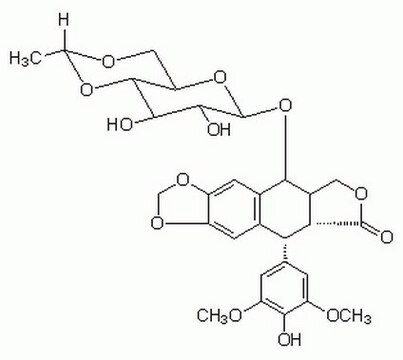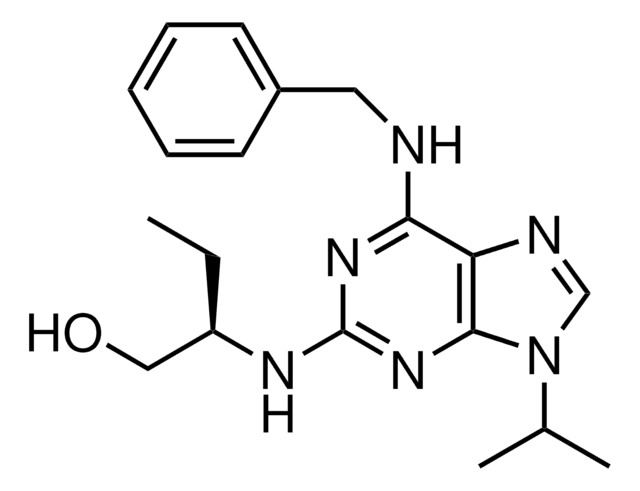A0781
Aphidicolin from Nigrospora sphaerica
≥98% (HPLC), powder
Synonym(s):
APC
About This Item
Recommended Products
Quality Level
assay
≥98% (HPLC)
form
powder
optical activity
[α]27/D +12°, c = 1 in methanol(lit.)
color
white
mp
227-233 °C (lit.)
solubility
ethanol: 1 mg/mL (stable at least a week at 4°C.)
DMSO: 10 mg/mL (stable at least six weeks at −20°C.)
methanol: 10 mg/mL
H2O: insoluble
antibiotic activity spectrum
neoplastics
viruses
mode of action
DNA synthesis | interferes
storage temp.
2-8°C
SMILES string
[H][C@@]12CC[C@@]3([H])[C@](C)(CO)[C@H](O)CC[C@]3(C)[C@]14CC[C@](O)(CO)[C@]([H])(C2)C4
InChI
1S/C20H34O4/c1-17(11-21)15-4-3-13-9-14-10-19(13,7-8-20(14,24)12-22)18(15,2)6-5-16(17)23/h13-16,21-24H,3-12H2,1-2H3/t13-,14+,15-,16+,17-,18-,19-,20-/m0/s1
InChI key
NOFOAYPPHIUXJR-APNQCZIXSA-N
Gene Information
human ... POLA1(5422) , POLD1(5424) , POLG(5428)
Looking for similar products? Visit Product Comparison Guide
Biochem/physiol Actions
Features and Benefits
Caution
Storage Class
11 - Combustible Solids
wgk_germany
WGK 3
flash_point_f
Not applicable
flash_point_c
Not applicable
ppe
Eyeshields, Gloves, type N95 (US)
Certificates of Analysis (COA)
Search for Certificates of Analysis (COA) by entering the products Lot/Batch Number. Lot and Batch Numbers can be found on a product’s label following the words ‘Lot’ or ‘Batch’.
Already Own This Product?
Find documentation for the products that you have recently purchased in the Document Library.
Customers Also Viewed
Articles
Apoptosis regulation involves multiple pathways and molecules for cellular homeostasis.
Cell cycle phases (G1, S, G2, M) regulate cell growth, DNA replication, and division in proliferating cells.
Our team of scientists has experience in all areas of research including Life Science, Material Science, Chemical Synthesis, Chromatography, Analytical and many others.
Contact Technical Service











